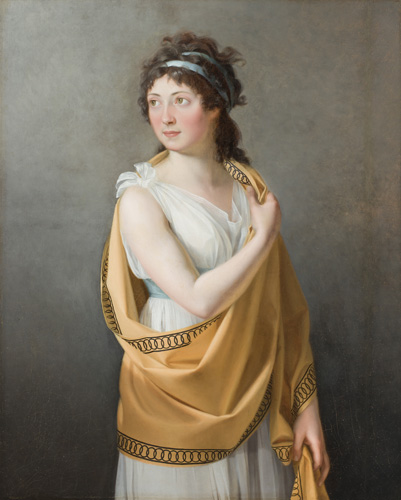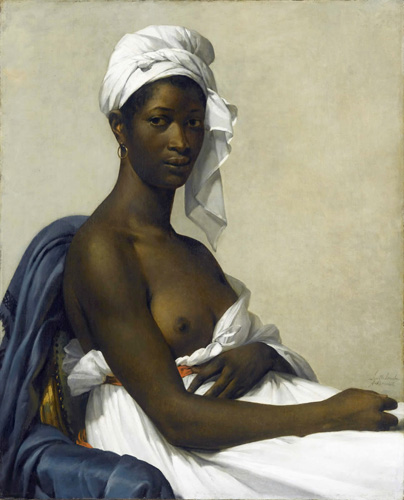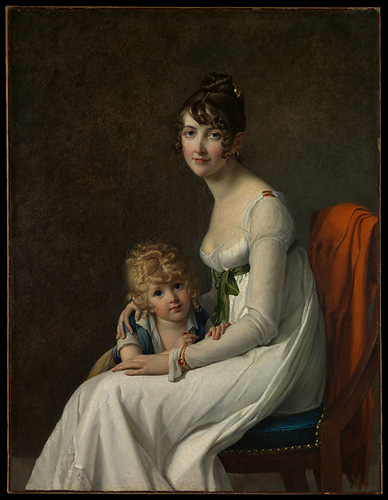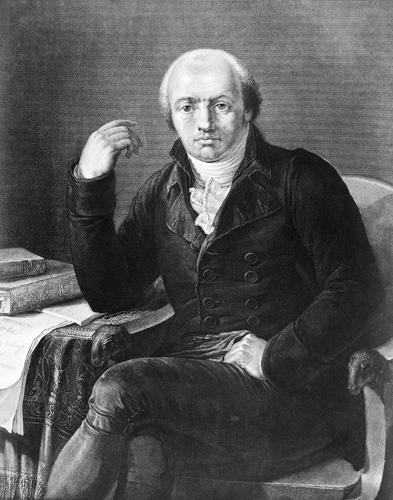Marie-Guillemine Benoist
Active in: France
Alternate names: Marie Guillemine de Laville-Leroux
Biography
Marie-Guillemine Benoist’s artistic career was intricately linked to the sociopolitical context of the Revolutionary era. Despite this political uncertainty, she showed her work regularly at public exhibitions in Paris and Versailles and received numerous portrait commissions from the Napoleonic regime.
Benoist was born in Paris in 1768. Early in her career, she studied with both Élisabeth Vigée-LeBrun and Jacques-Louis David. Benoist married Pierre-Vincent Benoist in 1793, but not long after the wedding, Pierre-Vincent was forced to flee France to avoid arrest for plotting Marie Antoinette’s rescue from prison. In 1800, Benoist’s most famous work, Portrait of Madeleine, was exhibited at the Salon to great controversy. In 1815, her husband was appointed to the Council of State, and Benoist ended her career out of a sense of decorum for her husband’s position. She died in Paris in 1826.
Selected Works

Marie-Guillemine Benoist, Portrait of a Lady, ca. 1799. Oil on canvas, 1003. X 81.6 cm. San Diego Museum of Art, Gift of Anne R. and Amy Putnam, 1946.5

Marie-Guillemine Benoist, Portrait of Madeleine, 1800. Oil on canvas, 81 x 65 cm. Musée du Louvre, INV. 2508
Circle
Student of
Élisabeth Vigée le Brun
Student of
Jacques-Louis David
Bibliography
A Checklist of Painters ca. 1200–1976 represented in the Witt Library, Courtauld Institute of Art, London. London: Mansell, 1978.
Allgemeines Künstlerlexikon: die bildenden Künstler aller Zeiten und Völker. Munich: Saur, 1992.
“Benoist, Marie Guilhelmine.” Oxford Art Online. https://doi-org.proxyiub.uits.iu.edu/10.1093/benz/9780199773787.article.B00016530.
Bishop, Cécile. “Portraiture, race, and subjectivity: the opacity of Marie-Guillemine Benoist’s Portrait d’une négresse.” Word & Image 35 (2019): 1–11.
Chapman, Caroline. Eighteenth-Century Women Artists: Their Trials, Tribulations, and Triumphs. London: Unicorn, 2017.
Fine, Elsa Honig. Women & Art: A History of Women Painters and Sculptors from the Renaissance to the 20th Century. London: Allanheld & Schram, 1978.
Heller, Nancy G. Women Artists: An Illustrated History. New York and London: Abbeville, 2003.
Honour, Hugh. The Image of the Black in Western Art. 5 vols. Cambridge: Harvard University Press, 1989.
“Marie-Guilhelmine Benoist.” RKD. https://rkd.nl/explore/artists/6584.
Morrill, Rebecca, Karen Wright, and Louisa Elderton, eds. Great Women Artists. London and New York: Phaidon, 2019.
Oppenheimer, Margaret. “Three Newly Identified Paintings by Marie-Guillelmine Benoist.” Metropolitan Museum Journal 31 (1996): 143–50.
Reuter, Astrid. Marie-Guilhelmine Benoist: Gestaltungsräume einer Künstlerin um 1800. Berlin: Lukas Verlag für Kunst-und Geistesgeschichte, 2010.
Royalists to Romantics: Women Artists from the Louvre, Versailles, and Other French National Collections. Washington, DC: National Museum of Women in the Arts, 2012.
Schmidt-Linsenhoff, Viktoria. “Who is the Subject? Marie-Guilhelmine Benoist’s Portrait d’une Négresse.” In Slave Portraiture in the Atlantic World. Edited by Agnes Lugo-Ortiz and Angela Rosenthal, 315–43. New York: Cambridge University Press, 2013.
Smalls, James. “Slavery is a Woman: “Race,” Gender, and Visuality in Marie Benoist’s ‘Portrait d’une négresse (1800).” 19th Century Art Worldwide 3 (2004): 1.
Thieme, Ulrich, and Felix Becker. Allgemeines Lexikon der bildenden Künstler: von der Antike bis zur Gegenwart. Leipzig: Seemann, 1907–50.
Weston, Helen. “‘The Cook, the Thief, His Wife and Her Lover’: LaVille-Leroulx’s Portrait de Négresse and the Signs of Misrecognition.” In Work and the Image: Work, Craft and Labour. Visual Representations in Changing Histories. Edited by Valerie Mainz and Griselda Pollock, 53–74. Aldershot: Ashgate, 2000.

